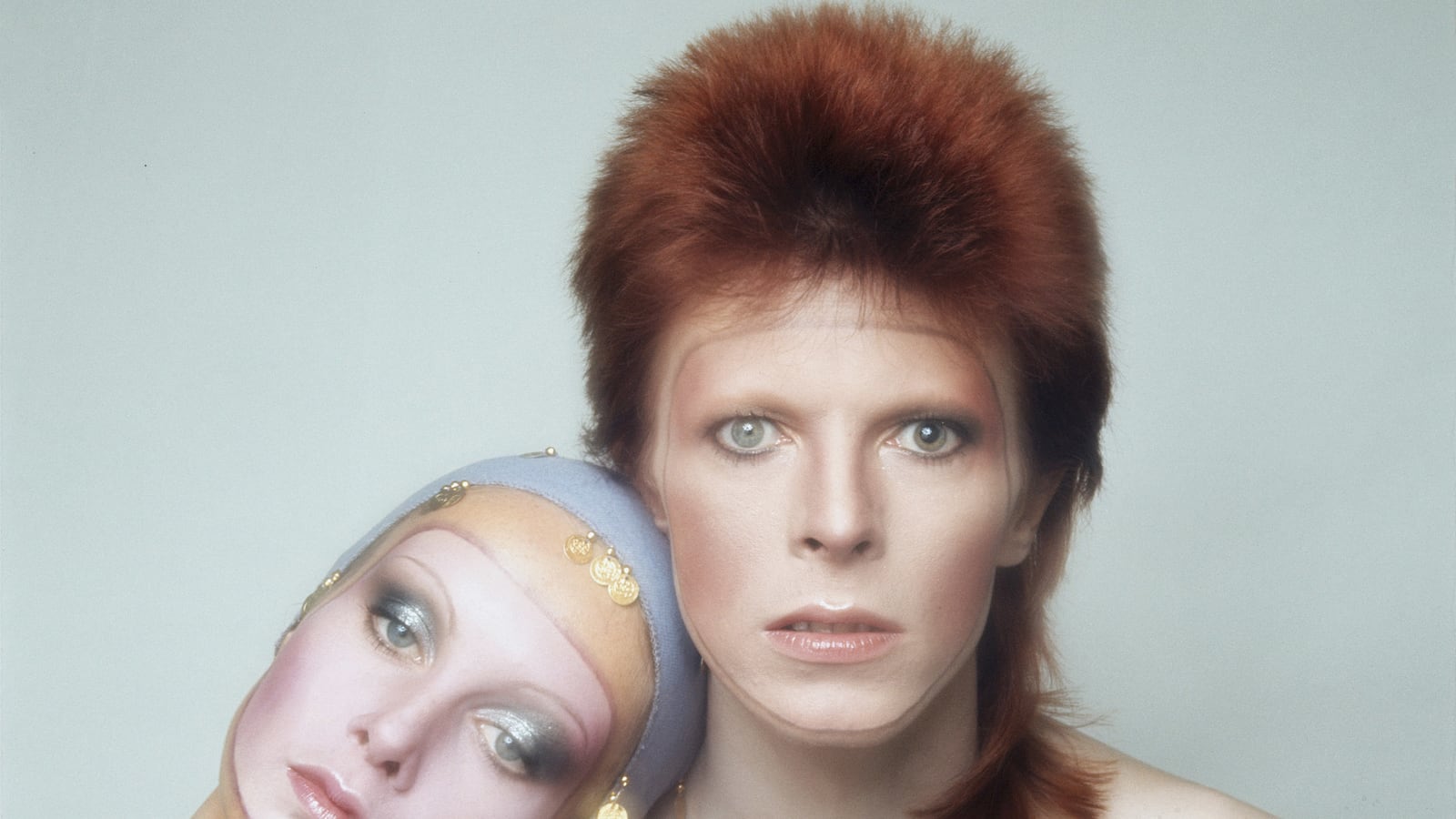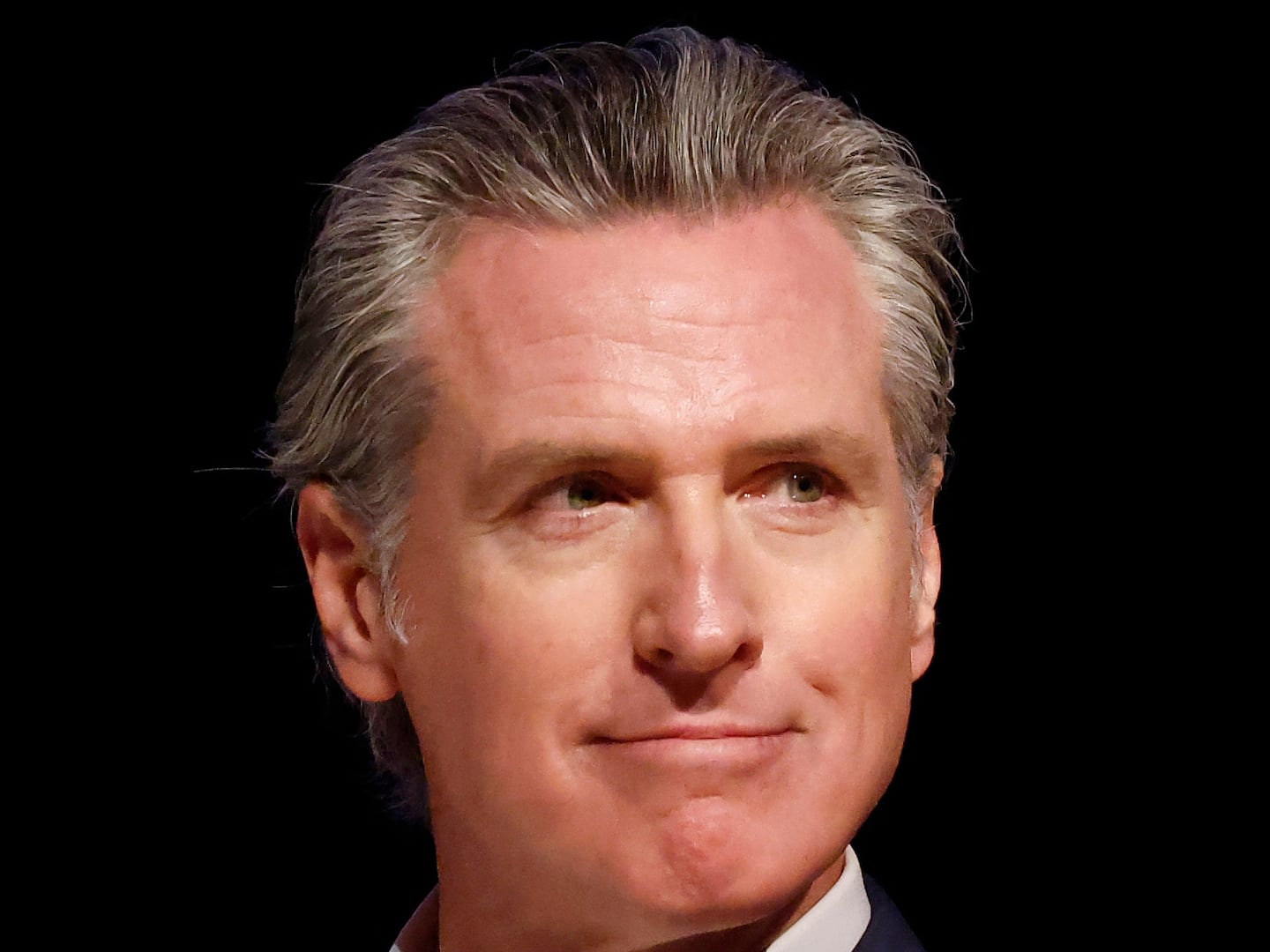To surf through images of David Bowie over the years is not just to glimpse a consummate performer, but also witness someone who radically redrew the boundaries of not just what men wore, but who they could be.
Photos: David Bowie, Fashion Icon

Before Bowie, being a man, even a famous man, meant dressing according to the rules of traditional masculinity. Hippie-era men may have grown their hair long, and worn tie-dye and loon pants, but it was Bowie who wore his hair long to blur the boundaries of gender itself; who wore makeup to do exactly the same.
His incarnation of Ziggy Stardust was a liberating siren, which blared through the living rooms of staid, buttoned-up Britain in the 1970s.
Suddenly, being a man could mean dress-up, too. Suddenly, “being a man” seemed very different. Sexuality could be fluid, not fixed. The tabloid term “gender-bender,” offensive as it was meant back then, was made for Bowie—and he loved playing up to it unapologetically.
It wasn’t just dressing up as Ziggy, although that is the touchstone many remember. See the astonishing bodysuit Kansai Yamamoto designed for him in 1973 for Bowie’s “Aladdin Sane” tour, for example.
Yamamoto told Elle in 2013 that it was designed for a woman, but look—in 1973—long before the world’s notion of what men and women can wear today, how radical and stunning Bowie looks, and how he owns that look with panache and daring. The look remains revolutionary today. Life was glorious, unashamed performance to Bowie.
After Ziggy and Sane came the Thin White Duke, and collaborations with designers including Thierry Mugler, Hedi Slimane, and Alexander McQueen.
Bowie’s looks mirrored his innovations as an artist: He was restless and unclassifiable. He could sing pop, glam rock, soul. He could act. He was a style icon if he was in stacked heels and silver jumpsuit, and he was a style icon when he was in the sharper suits and T-shirts and chinos he segued to in the 1980s. He was lithe and sexy. He strutted. He emoted. He loved art, and cared about art, and lived a restless artist’s life, no matter how successful and rich he became. His impulse was to innovate, long after he could have rested on the glories of the past.
VIDEO: A Tribute to David Bowie
Bowie was beautiful, classically so; those cheekbones were sheer. Later came the skinny suits, the skinny jeans, the orange, spiky hair transitioned to a luxuriant blond quiff, and—most recently—a simple crop, and that face, now in its late ’60s when last photographed in mid-December, was still beautiful, impish, and sexy, even if by then Bowie himself was very ill.
If the true test of a celebrity’s significance is his or longevity, or cultural impact, then Bowie has few rivals. We see him in our mind’s eye before we hear his voice. He is a lightning conductor, an original, a revolutionary and renegade—with his importance measured in the intensely personal experiences of those who felt Ziggy blaze a trail through the 1970s, and in how he helped change and challenge the strictures of gender and fashion.
Bowie also remained, fundamentally, an enigma—the best kind. He was a recluse, but not a hermit. He used the multimedia age for his own ends, and was never intruded upon by it. He let his image and songs do the talking for him.
For a compendium of him, and what he meant, the theatrical experience of Lazarus at the New York Theater Workshop, the last major work he was involved in (as well as the album of the same title), provides a moving, meaningful snapshot.
Now, there is also the video to “Lazarus” the song, which features in the stage show, as well as the 10-minute “Blackstar,” a fantasia of jazz, hip-hop, and pop, and oddness, the title track from his most recent album.
In “Blackstar,” he may look his age, and with that age the beauty, the style, and mystery remain intact.
On stage at the NYTW you will see the spaceman, you’ll see the older man, younger man, a man in love and a man lost. You’ll see boundaries of time and space and sexuality all blend and blur.
You’ll find a meditation on love, loss, death, connection, and disconnection. And you’ll find an artist who ultimately survives, and endures.
As you watch it—perhaps baffled as many have been—you will also be bewitched, seduced, and charmed. You’ll feel all those things—the best, most enriching kind of sensory confusion and clash—that Bowie himself made us feel.






